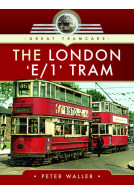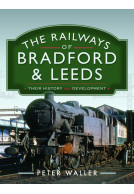Britain's Second-Hand Trams (Hardback)
An Historic Overview
Imprint: Pen & Sword Transport
Pages: 184
Illustrations: 250 colour & black and white illustrations
ISBN: 9781526738974
Published: 16th March 2021
(click here for international delivery rates)
Need a currency converter? Check XE.com for live rates
| Other formats available - Buy the Hardback and get the eBook for £1.99! | Price |
|---|---|
| Britain's Second-Hand Trams ePub (23.7 MB) Add to Basket | £9.98 |
During the history of Britain’s electric tramcar fleets, many thousands were manufactured of which the vast majority saw out their operational life with a single owner. However, for several hundred there was to be a second – if not, in certain cases, a third – career with a new operator.
Almost from the dawn of the electric era in the late 19th century tramcars were loaned or bought and sold between operators. The reasons for this were multifarious. Sometimes the aspirations of the original owners for traffic proved wildly optimistic and the fleet was downsized to reflect better the actual passenger levels. War was a further cause as operators sought to strengthen their fleets to cater for unexpectedly high level of demand or to replace trams destroyed by enemy action. For other operators, modernisation represented an opportunity to sell older cars whilst, certainly from the 1930s, a number of operators – such as Aberdeen, Leeds and Sunderland – took advantage of the demise of tramways elsewhere to supplement their fleet with trams that were being withdrawn but which still had many years of useful operational life in them. The process was to continue right through to the mid-1950s when Glasgow took advantage of the demise of the once-extensive Liverpool system to purchase a number of the streamlined bogie bogie cars that were built in the late 1930s.
In this book the author provides a pictorial history – with detailed captions – to the many electric trams that were to operate with more than one tramway during the period up to the closure of the closure of the Glasgow system in 1962.
"This is a fascinating and well produced book."
West Somerset Railway Association
This is a fascinating book for anyone interested in traditional British trams – indeed for anyone old enough to remember the systems in Leeds, Sheffield, Aberdeen, Edinburgh or Glasgow during the 1950s. Recommended.
Ffestiniog Railway Magazine
"This book is good value for money and contains some photographs that I had not seen before."
John Prentice, Tramway and Light Railway Society- Tramfare 320, May 2021
"Peter Waller marshals a mass of information - 965 transaction are covered here."
Tramway Review - September 2021
Featured in
Tramways & Urban Transit, Light Rail Transit Association
As seen in Shropshire Star
Shropshire Star
I enjoyed browsing through the book, particularly with it being about a little thought about topic, of how trams had an extended life in another area of the country.
Rail Advent
Read the full review here
The captions are comprehensive and informative. The modern day enthusiast will be interested to read of the optimism of the original tramway entrepreneurs, much of which was unfounded.There were myriad systems in small towns with a handful of trams which did not survive long.
The PSV Circle, April 2021 Issue
About Peter Waller
Brought up in Bradford, PETER WALLER grew up as the city’s trolleybus network gradually declined. In 1986 he commenced a career in publishing working for a number of years as Ian Allan Ltd publishing books, where he oversaw the commissioning and publication of a wide range of books. The first book he wrote was British and Irish Tramway Systems since 1945, in 1992. Since then he has written a number of transport books, moving to Shropshire where he is a director and secretary of the Online Transport Archive, vice-chairman of the West Shropshire Talking Newspaper, a committee member of the National Railway Heritage Awards and a past president of Rotary Club of Shrewsbury. He became a Council member of the National Transport Trust in 2020.





















